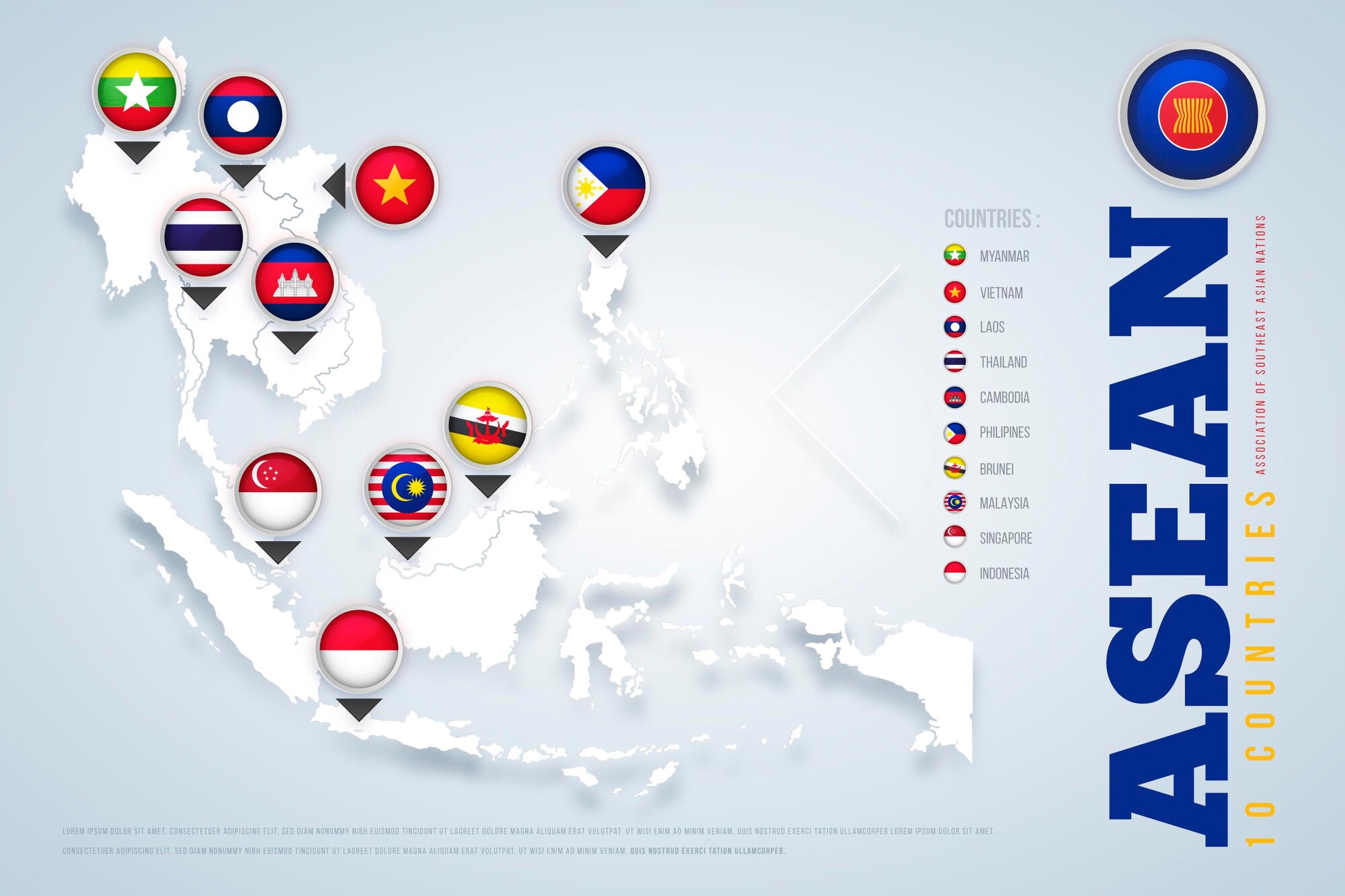Font size:
Print
ASEAN Summit
Context:
The Indian Prime Minister is set to attend the (ASEAN) Association of Southeast Asian Nations. ASEAN summit in Vientiane, the capital of Lao PDR, during a two-day visit.
More on News:
- In a statement, the PM remarked, “This year marks a decade of our Act East Policy. I will join ASEAN leaders to review progress in our Comprehensive Strategic Partnership and chart the future direction of our cooperation.”
- He will also participate in the East Asia Summit, which he said will offer a chance to discuss the challenges to peace, stability, and prosperity in the Indo-Pacific region.
What is ASEAN?
- Foundation: ASEAN, founded on August 8, 1967, initially comprised Indonesia, Malaysia, the Philippines, Singapore, and Thailand.
- These countries came together in Bangkok to foster regional cooperation and resolve disputes.
- Declaration: The signing of the ASEAN Declaration by the foreign ministers of these five nations laid the groundwork for what is now one of the most successful intergovernmental organisations in the developing world.
- The Declaration focused on promoting regional cooperation in economic, social, cultural, and educational fields while striving for peace and stability.
- Expansion: Since then, ASEAN has expanded to include Brunei, Lao PDR, Cambodia, Myanmar, and Vietnam, forming a 10-nation bloc with an anthem, a flag, and biannual summits with rotating chairmanships.
- Core Pillars: ASEAN’s core pillars are the Political-Security Community (APSC), Economic Community (AEC), and Socio-Cultural Community (ASCC).
- Motto: The organisation’s motto, “One Vision, One Identity, One Community,” reflects its focus on unity.
India’s Link with ASEAN:
- Act East Policy: ASEAN is central to India’s Act East Policy, which builds on the earlier Look East Policy that originated in the 1990s.
- The policy initially sought to deepen India’s economic ties with Southeast Asia in the post-Soviet world and has since evolved to include political, strategic, and cultural dimensions.
- India’s Northeast region, due to its proximity to Southeast Asia, plays a crucial role in these efforts.
- Development in Relations: India’s relations with ASEAN have expanded over time, culminating in the signing of a Free Trade Agreement (FTA) in 2010.
- Although India chose not to join the Regional Comprehensive Economic Partnership (RCEP) in 2020, trade between India and ASEAN has grown steadily, except during the pandemic years.
- India is also part of the ASEAN Plus Six grouping, which includes China, Japan, South Korea, New Zealand, and Australia.
What is the East Asia Summit?
- Foundation: The East Asia Summit (EAS), initiated in 2005, brings together 16 participating countries, including ASEAN members and Australia, China, India, Japan, New Zealand, and South Korea.
- The United States and Russia joined later, expanding the group to 18 nations.
- Objective: The EAS is an annual meeting of heads of state and government aimed at addressing key political and economic issues in the Indo-Pacific region.
ASEAN’s Significance Amid China’s Rise:
- Central Pillar of India’s Act East Policy: At the 2023 ASEAN-India Summit in Jakarta, Prime Minister emphasised ASEAN as the “central pillar” of India’s Act East Policy.
- India reiterated its support for ASEAN’s central role in maintaining peace and stability in the Indo-Pacific region.
- China’s Growing Influence: China’s increasing global influence under President Xi Jinping has raised concerns, particularly regarding its assertive approach.
- China’s economic power enables it to fund large infrastructure projects in various countries, raising fears of “debt traps” where nations struggle to repay loans, giving China leverage over strategic assets.
- China’s territorial claims in the South China Sea overlap with those of ASEAN members such as the Philippines and Brunei, further complicating regional relations.
- The ongoing military conflict in Myanmar, an ASEAN member, has also impacted regional cooperation.
- ASEAN’s Neutral Stance: Despite challenges, ASEAN has maintained neutrality in the broader geopolitical rivalry between China and the United States.
Subscribe to our Youtube Channel for more Valuable Content – TheStudyias
Download the App to Subscribe to our Courses – Thestudyias
The Source’s Authority and Ownership of the Article is Claimed By THE STUDY IAS BY MANIKANT SINGH




[…] 21st ASEAN-India Summit 2024, held in Vientiane, Laos, focused on enhancing India-ASEAN relations amid global tensions and conflicts. Prime Minister Narendra Modi emphasised dialogue and […]
[…] that also included Singapore. This visit had important goals, including enhancing India-Australia relations and addressing some key regional and global issues. This essay explores the details and […]